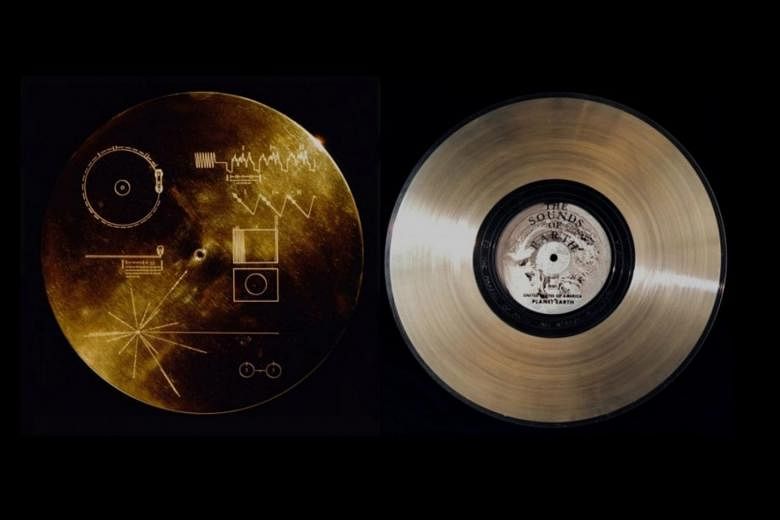NEW YORK • You can soon make space in your music collection for a record that the National Aeronautics and Space Administration (Nasa) launched into space in 1977.
The album, Voyager Golden Record, is "intended to communicate a story of our world to extraterrestrials", according to Nasa's website.
The American agency launched two copies of the album - which contains spoken greetings in 55 languages, music by Bach and Chuck Berry and even songs by humpback whales - into space in 1977 on the Voyager 1 and 2 spacecrafts.
Until recently, the album has not been made public, except to donors of a Kickstarter campaign by Ozma Records. It raised nearly US$1.4 million (S$1.9 million) to issue a limited number of copies on vinyl.
That campaign was so successful it decided to release the album to the public. At end-January, it will begin shipping a box-set vinyl edition through record distributor Light In The Attic.
For Nasa, compiling a snapshot of the planet's history on a single record was no easy task - especially given its purpose, which then United States President Jimmy Carter outlined in a statement included on the album.
"This is a present from a small distant world, a token of our sounds, our science, our images, our music, our thoughts and our feelings," his statement said.
"We are attempting to survive our time so we may live into yours. We hope some day, having solved the problems we face, to join a community of galactic civilisations."
Nasa approved the record about six months before the launch of the two Voyager spacecrafts, according to science writer Timothy Ferris.
The team could not use an eight-track tape, a popular format at the time, because space radiation would degrade the magnetic tape, according to Nasa.
Instead, they made a record from copper and coated it with gold, which would protect it from the extreme temperatures and radiation in space.
They used records that spun at 162/3 revolutions a minute rather than the conventional 331/3 RPMs. That meant lower sound quality, but it allowed for 90 minutes of music rather than 27.
The real question was what to put on it. Some were obvious. A 12-minute audio essay, fittingly titled The Sounds Of Earth, is filled with audio of everything, from waves and laughter to a baby's cry and the wet smack of a kiss.
Others were more practical. The records included three compositions by J.S. Bach and two by Ludwig van Beethoven. The composers were given so much space in case the potential extraterrestrial life-forms were unable to hear the music, but could feel its vibration.
Others were chosen as metaphors.
Take Berry's Johnny B. Goode, for example. The song, representing rock 'n' roll, "was the music of motion, of moving, getting to some place you've never been before and the odds are against you, but you want to go", author Ann Druyan noted.
Scientists also electronically encoded 115 images on the record, such as photographs of a mother nursing her child and an astronaut floating in space.
Voyager 1 exited the solar system - the first probe to do so - in 2012. Voyager 2 is still in the solar system.
Despite the passage of time, the Voyager record should still be in perfect condition.
"I'd say it's as fresh and new as the day it was placed aboard the spacecraft," Mr David Doody, an engineer on the Voyager mission, told the Atlantic.
"It's been stored in a vacuum more perfect than any attainable on Earth, and protected from dust and cosmic rays by an aluminium metal case."
WASHINGTON POST

